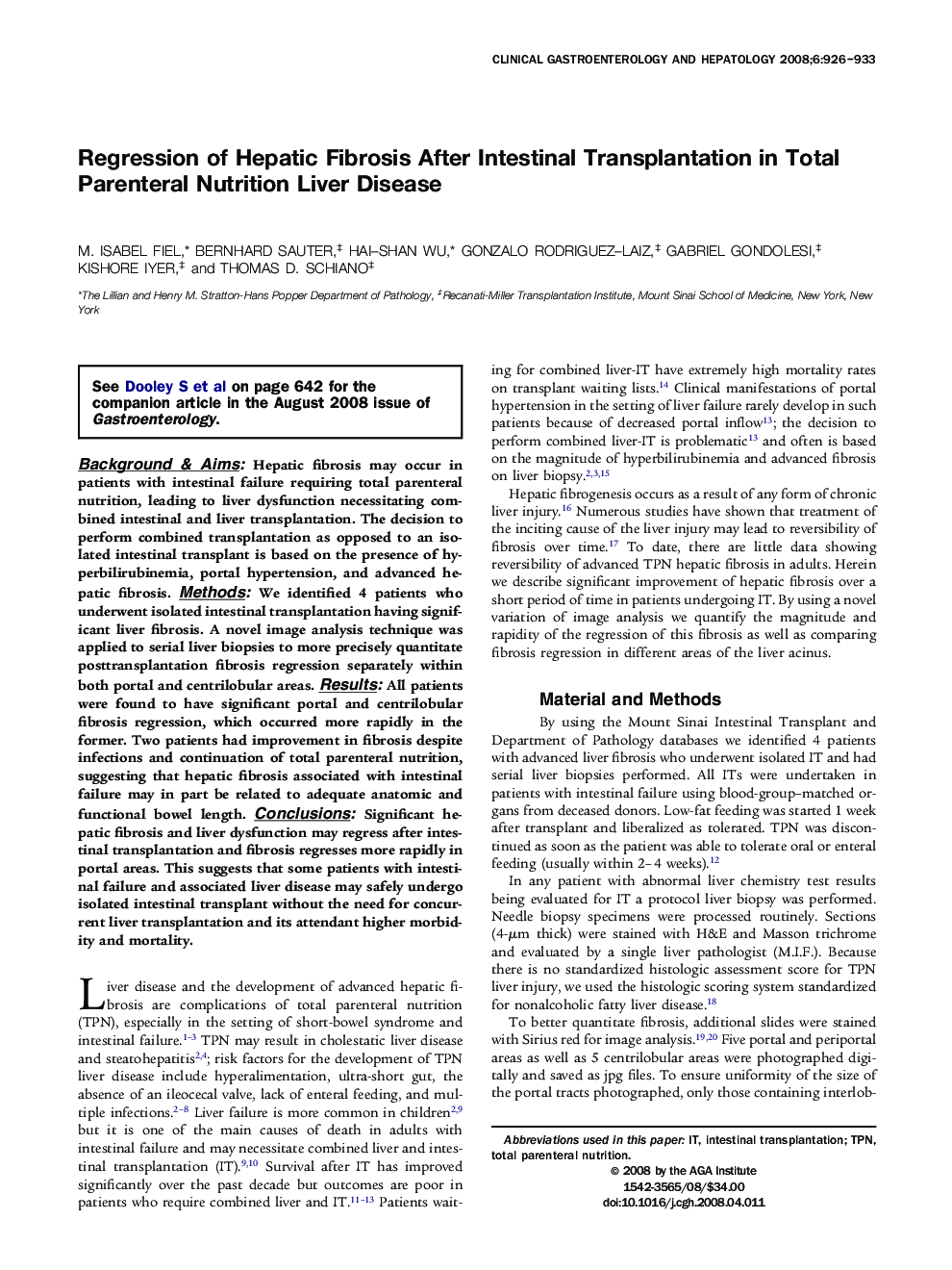| Article ID | Journal | Published Year | Pages | File Type |
|---|---|---|---|---|
| 3285549 | Clinical Gastroenterology and Hepatology | 2008 | 8 Pages |
Abstract
Background & Aims: Hepatic fibrosis may occur in patients with intestinal failure requiring total parenteral nutrition, leading to liver dysfunction necessitating combined intestinal and liver transplantation. The decision to perform combined transplantation as opposed to an isolated intestinal transplant is based on the presence of hyperbilirubinemia, portal hypertension, and advanced hepatic fibrosis. Methods: We identified 4 patients who underwent isolated intestinal transplantation having significant liver fibrosis. A novel image analysis technique was applied to serial liver biopsies to more precisely quantitate posttransplantation fibrosis regression separately within both portal and centrilobular areas. Results: All patients were found to have significant portal and centrilobular fibrosis regression, which occurred more rapidly in the former. Two patients had improvement in fibrosis despite infections and continuation of total parenteral nutrition, suggesting that hepatic fibrosis associated with intestinal failure may in part be related to adequate anatomic and functional bowel length. Conclusions: Significant hepatic fibrosis and liver dysfunction may regress after intestinal transplantation and fibrosis regresses more rapidly in portal areas. This suggests that some patients with intestinal failure and associated liver disease may safely undergo isolated intestinal transplant without the need for concurrent liver transplantation and its attendant higher morbidity and mortality.
Related Topics
Health Sciences
Medicine and Dentistry
Gastroenterology
Authors
M. Isabel Fiel, Bernhard Sauter, Hai-Shan Wu, Gonzalo Rodriguez-Laiz, Gabriel Gondolesi, Kishore Iyer, Thomas D. Schiano,
